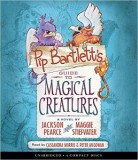
Welcome to the Horn Book's Family Reading blog, a place devoted to offering children's book recommendations and advice about the whats and whens and whos and hows of sharing books in the home. Find us on Twitter @HornBook and on Facebook at Facebook.com/TheHornBook
Go to sleep, my little darling
When my kids were babies, I went through such an excruciating period of sleep deprivation that I remain, to this day, traumatized.
 When my kids were babies, I went through such an excruciating period of sleep deprivation that I remain, to this day, traumatized. At the slightest sign of a sleep issue, I still snap to attention and do everything I can possibly think of to nip it in the bud. When they were babies and toddlers, we followed the parenting books to a T (Healthy Sleep Habits, Happy Child, anyone?) and consistently let them cry it out until they became what I would call decent sleepers.
When my kids were babies, I went through such an excruciating period of sleep deprivation that I remain, to this day, traumatized. At the slightest sign of a sleep issue, I still snap to attention and do everything I can possibly think of to nip it in the bud. When they were babies and toddlers, we followed the parenting books to a T (Healthy Sleep Habits, Happy Child, anyone?) and consistently let them cry it out until they became what I would call decent sleepers.Fast forward a few years, and while my kids might stay asleep, getting them into bed often feels like an exhausting and thankless task. You see, they can walk now. And they can talk...a lot. And if they don’t feel like going to sleep (which is often), they let us know. The visits begin approximately five minutes after we leave their rooms for the evening. Every ten minutes for a good forty-five minutes, a child appears to ask a question or to show us an invisible spot on their pinky that “hurts.”
One night about a year ago, however, I had a revelation. After multiple interruptions while trying to listen to an audiobook (Louis Sachar’s Fuzzy Mudd) as I packed the next day’s lunches, I thought: what if I gave them audiobooks to listen to in bed? Would they leave me in peace? I decided to give it a try.
 Readers, it worked. You can’t make a child go to sleep, but I learned that you can get them to stay in their rooms--a habit that’s much easier to adopt since we introduced them to audiobooks. When I began this little experiment, they were almost four and almost six. I found cheap CD players at my local big box store and brought them home, along with books on CD from the library. My four-year-old required some lessons and practice but was eventually able to work the CD player herself. I gave her five book/CD bundles to choose from; in the morning I'd find them spread out on the rug next to her bed, usually in some kind of pattern: e.g., two Llama Llama books on top, Don’t Let the Pigeon Drive the Bus! on the left, Penguin and Pinecone on the right, and The Complete Pinkalicious audio collection completing the circle. This practice has blossomed into a wonderful nighttime ritual for my visual, tactile learner. She may fall asleep with books on her face, but at least she’s lying down and focused on one thing more quickly.
Readers, it worked. You can’t make a child go to sleep, but I learned that you can get them to stay in their rooms--a habit that’s much easier to adopt since we introduced them to audiobooks. When I began this little experiment, they were almost four and almost six. I found cheap CD players at my local big box store and brought them home, along with books on CD from the library. My four-year-old required some lessons and practice but was eventually able to work the CD player herself. I gave her five book/CD bundles to choose from; in the morning I'd find them spread out on the rug next to her bed, usually in some kind of pattern: e.g., two Llama Llama books on top, Don’t Let the Pigeon Drive the Bus! on the left, Penguin and Pinecone on the right, and The Complete Pinkalicious audio collection completing the circle. This practice has blossomed into a wonderful nighttime ritual for my visual, tactile learner. She may fall asleep with books on her face, but at least she’s lying down and focused on one thing more quickly. My older child has fallen hard for middle-grade fantasies, preferably read by plucky British narrators. We decided to let him try the first Harry Potter book when he turned six, and he devoured it. Unlike his sister, he’s the kind of kid who, since discovering audiobooks, will happily pop one into his CD player, tuck himself into bed, and listen until he dozes off. It’s been a pleasant experience for all of us. We often read together whatever he’s listening to (for example, Pip Bartlett’s Guide to Magical Creatures, The Water Horse, and Upside-Down Magic series), so his recall and comprehension of these longer chapter books has really improved.
My older child has fallen hard for middle-grade fantasies, preferably read by plucky British narrators. We decided to let him try the first Harry Potter book when he turned six, and he devoured it. Unlike his sister, he’s the kind of kid who, since discovering audiobooks, will happily pop one into his CD player, tuck himself into bed, and listen until he dozes off. It’s been a pleasant experience for all of us. We often read together whatever he’s listening to (for example, Pip Bartlett’s Guide to Magical Creatures, The Water Horse, and Upside-Down Magic series), so his recall and comprehension of these longer chapter books has really improved.Sure, bedtime can still feel like a chore now and then. They still approach us with imaginary ailments and entreaties for water. Overall, though, I find that they are more engaged at bedtime and less likely to leave their rooms. Introducing them to audiobooks has made them dedicated audiobook listeners and has increased their love and personal connection with books. If this allows their parents more uninterrupted viewing time for The Great British Baking Show, well, more power to it.
RECOMMENDED
ALREADY A SUBSCRIBER? LOG IN
We are currently offering this content for free. Sign up now to activate your personal profile, where you can save articles for future viewing.






Add Comment :-
Be the first reader to comment.
Comment Policy:
Comment should not be empty !!!